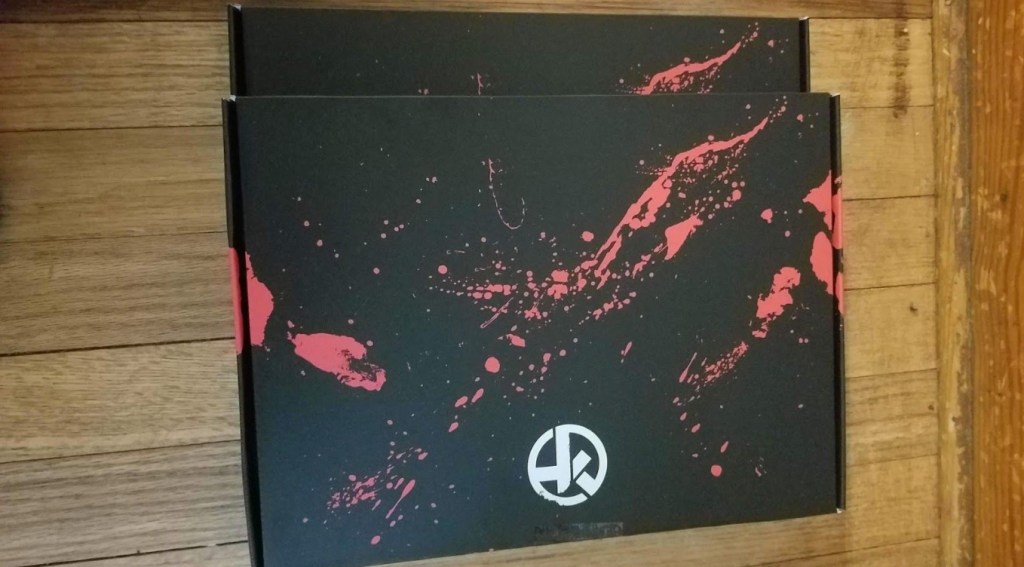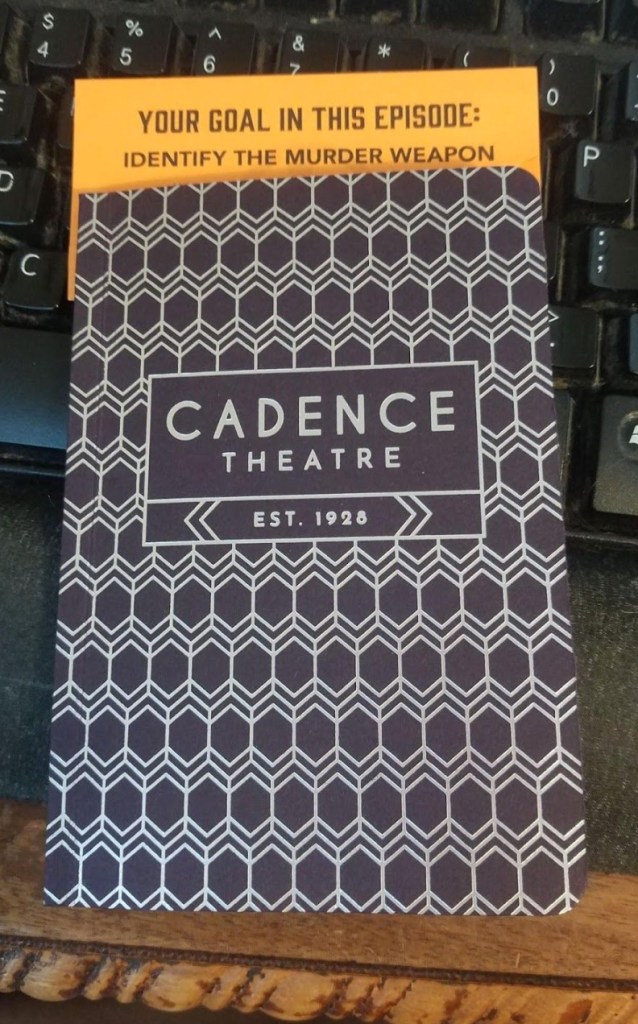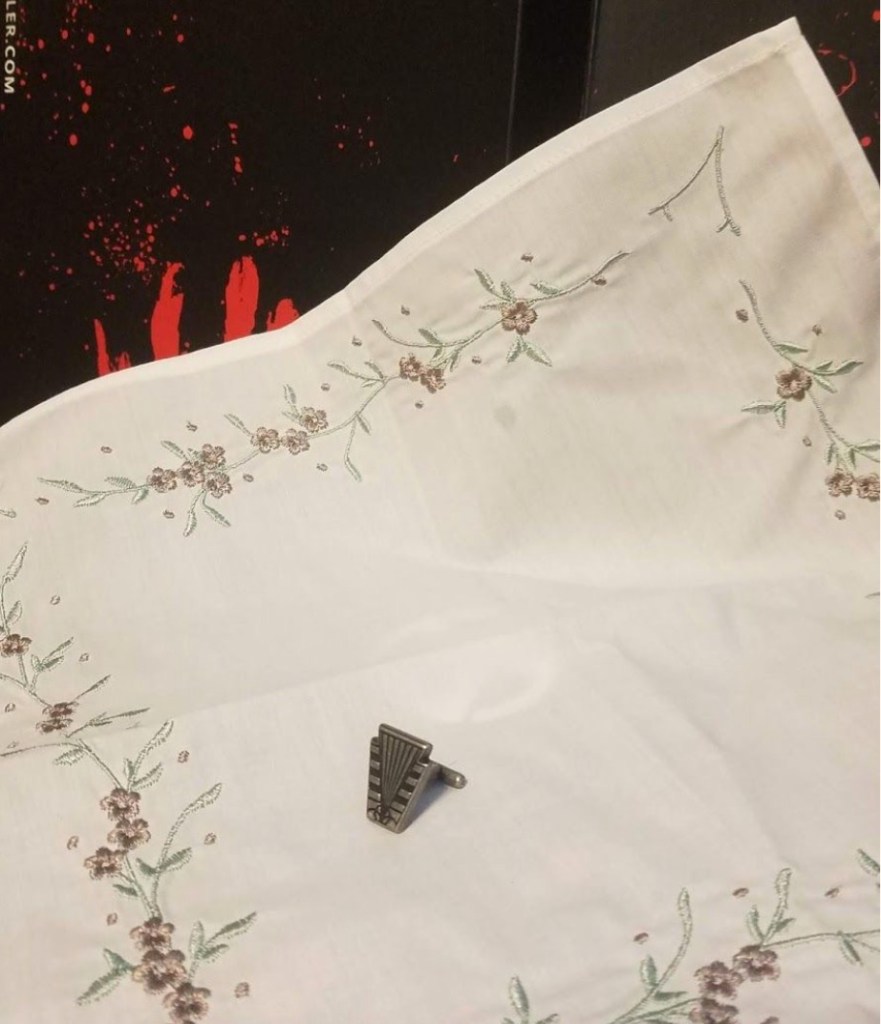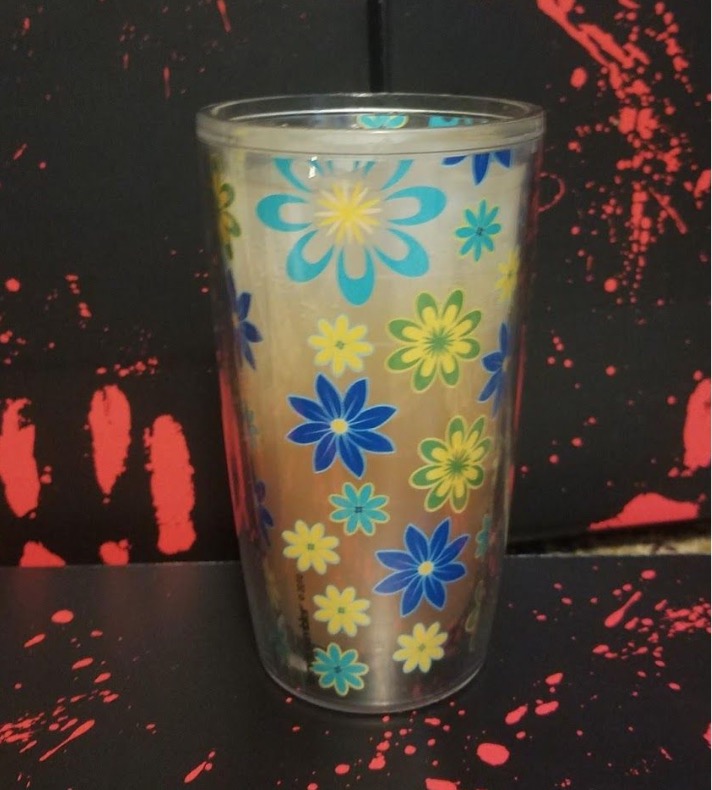Why Hunt A Killer Is the Perfect Murder Mystery Game for Amateur Sleuths
Do you have what it takes to solve murder mysteries at home? Hunt A Killer is the game for you!

This article is sponsored by: ![]()
Have you ever watched a crime show and thought you could solve the mystery better than the detectives? Is your ideal night out a Murder Mystery Dinner Theater? Are you a true crime aficionado? Do you love deciphering coded messages? If you answered yes to any of those questions, Hunt A Killer may be the game for you.
While I will admit to having a low scare tolerance, I’ve loved murder mysteries since growing up on reruns of Murder She Wrote. Given the inaccessibility of events like dinner theater during the pandemic, the idea of solving a murder mystery right in my own home sounded like a perfect opportunity for my husband and I to do something fun together. Hunt A Killer is a subscription service where you receive episodes of a murder mystery in a monthly box. The full mystery takes six boxes to solve, and each episode has a particular goal for you to resolve. The result is a mix between a role playing game, a party game, murder mystery television, and dinner theater—and utterly enjoyable.
Part of the reason the combination works so well, according to Carlea Holl-Jensen, one of the staff writers on the currently released season, is that the writers for Hunt A Killer seasons come from many areas of expertise.
“The teams have really diverse sets of backgrounds,” she explained. “We have people who come from video game backgrounds, who come from educational backgrounds, who come from TV and theater.”
The very first game produced by the company was an immersive theater live event; co-founders Ryan Hogan and Derrick Smith worked together to try to figure out to scale that for a broader audience, how to bring it into people’s homes. “In 2016, they started producing boxes basically in our co-founder Derrick’s living room,” Carlea laughed.
When I mentioned that the style of social mystery-solving reminded me of the old How to Host a Murder party game boxes, Carlea said there were three people on the Hunt A Killer team who hadn’t just played those, but written for that type of game themselves (many members of the company are also Dungeons and Dragons players, which will surprise absolutely no one familiar with both games).
While some similar games are one-shots, the serial storytelling nature of murder mystery television programming helped the Hunt A Killer team land on a subscription model—and they borrowed the style of writers’ room collaboration for creating the story of each season from television as well.
The current season of Hunt A Killer, titled Curtain Call, is a cold case mystery. In 1934, actress Viola Vane disappeared; the case was closed quickly by police of the era, but when her mummified body is discovered by the current theater owner, it’s clear she wasn’t missing—she was murdered. Neither the police nor the theater board are particularly interested in picking the case back up, but the theater owner is determined to achieve justice for the woman, so she hires you, the player, to solve the clues.

When you open the first box, you receive a letter from your contact—a private investigator—and a second letter from the theater owner. Inside the box are documents, physical objects, clues, and collectibles.

Each episode also has a particular mission for you to achieve; for example, in episode one of Curtain Call, the clues provided give you enough information to identify the murder weapon. We found that it didn’t take us long to solve the episode’s mission—but that the sheer amount of information provided about the rest of the mystery had us guessing about who had motive (and who might be having an affair; or why the victim had so much money in her purse!).
“That’s really what we want, is for people to keep coming back and going, ‘Actually, now that I think more about that, that couldn’t have been right,’” Carlea said.
While they do have people who play the boxes solo, many people play them socially—some even collaborate virtually, despite the physical objects in the boxes. “Sometimes people come to it with a little bit of anxiety, like, ‘Oh, I don’t know how do ciphers, or I’m not that good a detective,’” she continued, explaining that especially first-time players may feel more comfortable pairing with a teammate who has different skills. “It’s also just fun to debate and talk about things.
The amount of research that goes into each element, especially in a historical story like this one, is intense. Each episode comes with a physical object—a cufflink, a handkerchief—that provides tangible information about the murder. Even the documents are physical objects: the texture of a letter produced on a typewriter gives more tactile experience than a mass-produced photocopy. Carlea discussed how one of the staff designers, Krystle Alder, researched even the fonts to make sure they were available on typewriters in 1934.

Because Curtain Call takes place at a Broadway theater, Carela talked about how much research had gone into the theater of the era. “I did a lot of listening to podcasts and reading about sort of characters, real people in the period who kind of had similar stories. So there was a lot of sort of, ‘Oh, this person had a similar trajectory, or something happened to them,’” she recalled, and though none of her historical figures met the same grisly death as Viola Vane, she was able to crib notes from the backgrounds of real performers.

One of the staff writers, Elinor Haney, did a lot of research into what would happen to a body left in an attic for 80 years—she looked at mummies and tried to figure out how Curtain Call’s victim would appear upon her discovery. (Forensic and legal research is important in other seasons, which have primarily featured contemporary murders as well.)
I asked how the team selects the props, and while some of it comes down to what it would cost to produce a particular piece for every box sent to subscribers, a lot of it has to do with the story. The writing team will pitch an idea they think will have the most impact to their procurement manager, Kristina Green. Sometimes, Carlea recalled, Kristina’s response is “Absolutely not. That’s ridiculous. There’s no way.” But in most cases, “she just does such an incredible job of finding the stuff that we just kind of dream up out of thin air.”
Ultimately, no matter how cool the concept (some seasons have required players to destroy a piece of evidence in some fashion to be able to get the clue!), the question for the team is “How is it serving the story?” Each clue is designed that way: a cipher, a photo, a playbook from a fictional Broadway musical, or a physical object like a cufflink.
Curtain Call is also a transmedia experience. In addition to the box, there are clues delivered through a “file-share” system (which includes some very tasty recipes for mixed drinks that would have been served just after Prohibition ended; pictured is a non-alcoholic Tango Twist I tried out—and it was quite tasty). The team also created a website for the Cadence Theater (where I found possible additional clues for the episodes I haven’t yet received while I was writing this article). While I’m an old-school gamer when it comes to this type of experience, and prefer for everything to be able to be done without an Internet connection, I was surprised to find how much I felt the online component added to my experience. (We also looked up conversion rates for currency, street addresses, and other hidden pieces of information.)

The team behind each season is huge, including not only the writers (for Curtain Call, that’s Elinor Haney, Travis Madden, Stephanie McGowan, and Carlea Holl-Jensen) and designers (Krystle Alder and Keith Pinkston), but also photographers (Leah Hewitt) and costumers (companies Milk & Ice and The Marilyn Johnson Sewing Design Studio, who provided period clothing for all the photo shoots), Director of Production (Melissa LaMartina, who coordinated the photos and shot the website video), and Sourcing Manager (Kristina Green).
On pieces like the website, players may wonder which parts are created media and which are found photos—and that’s part of the delight. The newspaper clippings, magazine articles, advertisements, and receipts are all produced with the intent to feel so real, players can get fully immersed in the world of the story.
When players run into difficulties (one player wrote in to say a dog had eaten one of the clues to the mystery!), Hunt A Killer has social forums and other accessible hints where players can reach out for help. If players just can’t wait until next month for their box, because they want to binge it all at once, there’s an option to expedite the next box—or players can purchase completed seasons or premium mysteries from the Hunt A Killer store. Players that want a more X-Files experience can also delve into the Empty Faces (paranormal mystery) or Earth Break (sci-fi survival) boxes. While the games have a higher price point than some at-home subscriptions, the Hunt A Killer team encourages cost-sharing and playing with friends (in ways that are safe and responsible during the pandemic).
But whatever you bring to the table, whatever your play style (solo or team, role play or riddle focused), you’re doing it right. “There’s no actual right way to do it,” Carlea confirmed. And that’s part of the fun.
Do you have what it takes to Hunt A Killer? Click here to find out! Use code GEEK for 20% off your first box!
